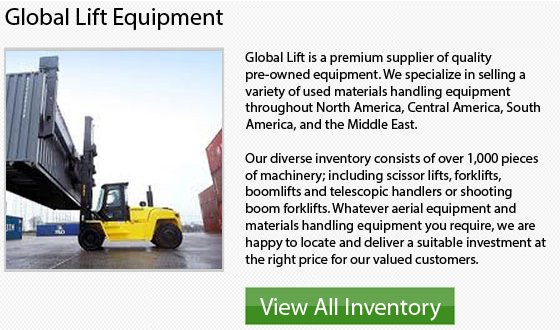
The following add-ons are really helpful for narrow aisle forklifts:
Side shift: Side shift is an option that permits the lateral movement of the load without having to move the model. This enables loads to be positioned with much more accuracy.
Tilt mast: The tilt mast option enables the forks to shift backwards and forwards. This is recommended in cases where loads aren't entirely level. To be able to gain greater stability while moving a loaded truck, the mast could be tilted backwards.
Extendable forks: Extendable forks help the reach of a lift truck to allow for the stacking of pallets one in front of the other. This is referred to as double deep loading.
Operator platforms: Some NA lift trucks have operator platforms that could raise and lower the operator while simultaneously lowering and raising the forklifts forks. This provides utmost control and visibility when handling loads at heights of 6 to 9 meters.
Forklift on a Ramp
Lift truck operators should be well taught on the equipment. They are required to be tested and licensed or certified. It is very vital for anybody using a lift truck to be educated about safety rules and problems. Drivers need to understand how to adjust on uneven surfaces or in cases where the weight of the load changes the center of gravity. Safety guidelines include the safe use of a forklift on a ramp, that is always occurring as the operator will usually have to drive up and down ramps to unload and load containers.
Guidelines for Operating a Forklift on a Ramp
1 While approaching and driving up and down the ramp, drive slowly. The possibility of mishaps is higher while driving fast because this could upset the machine's center of gravity.
2 Drive the forklift in reverse when moving up an incline on a ramp while not carrying a load.
3 Drive forward when moving down an incline on the ramp with no load.
4 When moving down or up a ramp while carrying a load, tilt the forks back a little to shift the load's center nearer the front of the equipment.
5 Drive forward up a ramp when carrying a load to make the load more stable.